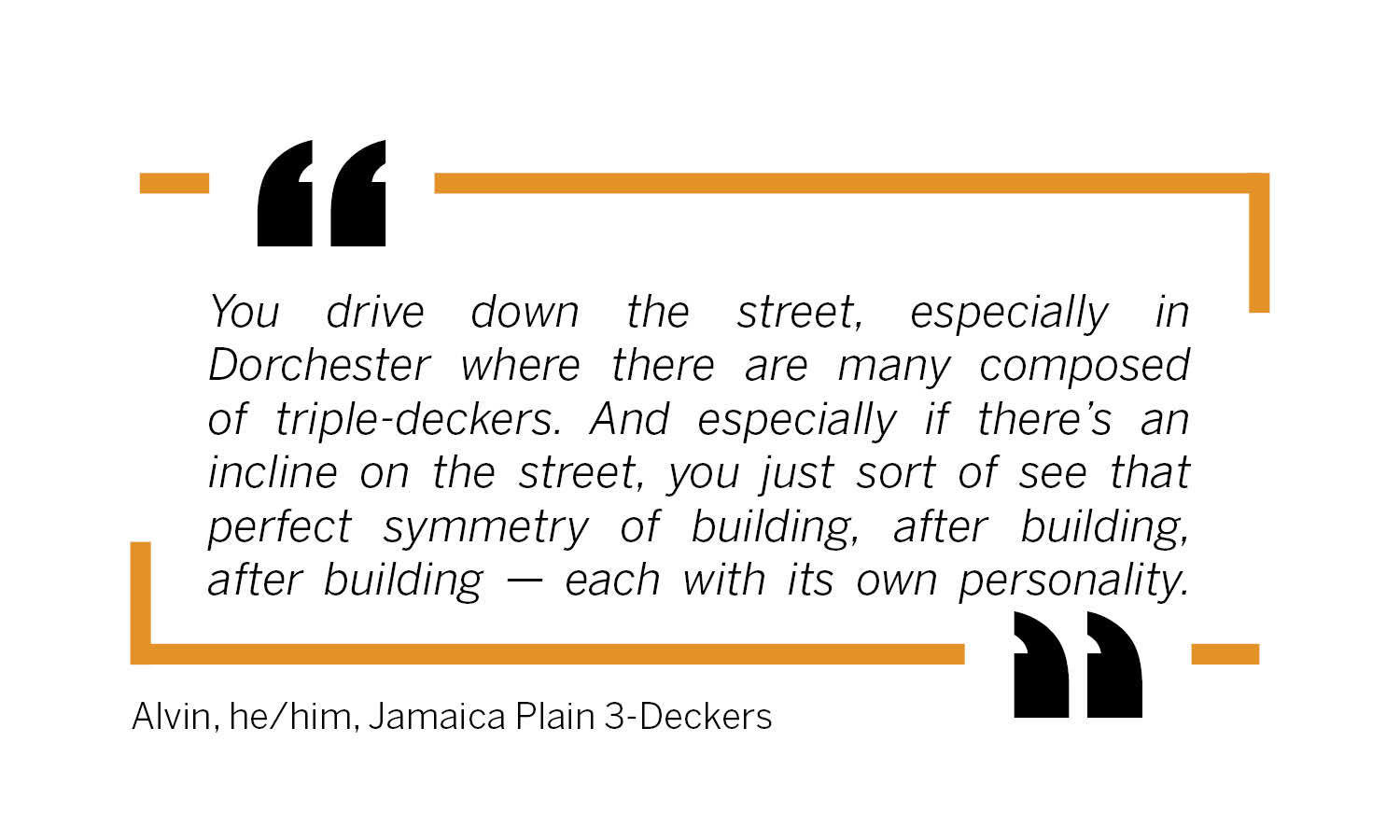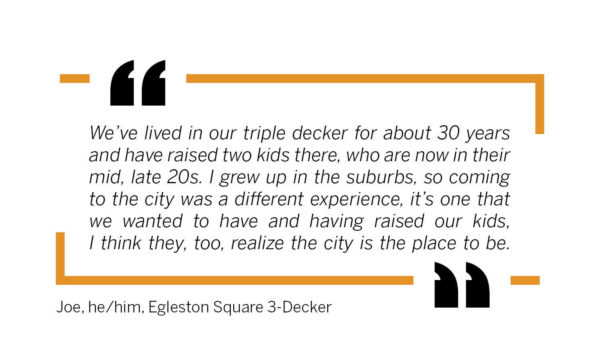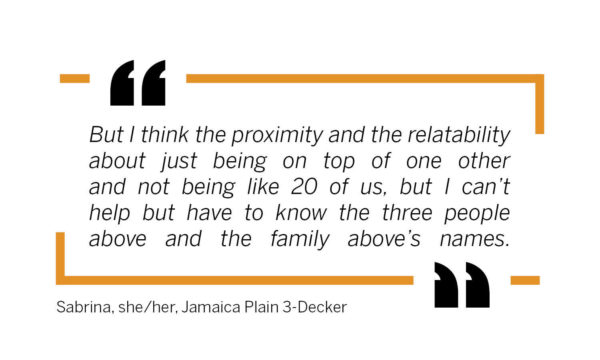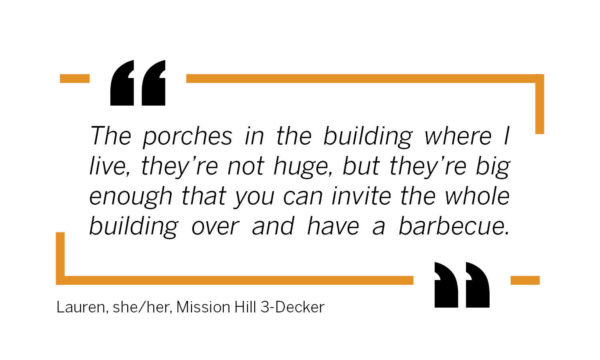Present
Today, three-deckers are the homes to incredibly diverse populations and remain an important piece of Boston’s and the region’s housing stock.

Today's Residents
Today's three-decker residents are more economically, racially, and socially diverse than ever before. In recent years, Greater Boston has become the home for individuals and families from a wide variety of countries, mainly in the Caribbean, Latin America, Asia, and more recently, Africa.
While many of today's residents share key similarities with those from previous centuries, including social class and age, a new demographic has significantly shifted the state and perception of today's three-deckers: students. In Boston, students make up 20 percent of the city's population and many, although not all, are housed in three-deckers. As an added result, typical working families are unable to compete with the prices that 3 or more students living in a single three-decker unit can offer.
THE TENACITY OF THE THREE DECKER
Despite the 1930's ban, three-deckers make up about one quarter of the city’s housing stock today. In the '70s and '80s, as it struggled to recover from the population exodus of white flight and federal disinvestment, — the City initiated a focus on restoring and repairing three-deckers. This evolved from the single owners and landlords, to the condominium scenario we are more familiar with today, where each floor, like each condo unit, is owned separately. What was once built to be the most affordable option, is now among the most expensive and desired housing in the city.
THREE DECKERS IN THE TIME OF COVID
When we held our Triple-Decker Thursday calls this past May, we also spoke with residents about how they currently experienced being at home during a global pandemic. A few residents told us about how they were learning to re-familiarize themselves with their home balconies, to spend more time outside while still being inside, and others about how hallway interactions changed, where they listened for neighbors out in staircases to determine when they themselves could go out into these shared spaces. And while many of these stories were about navigating an incredibly uncertain time, they taught us about the resiliency of individuals and their families, and how their homes provided some semblance of security and safety during this time.







